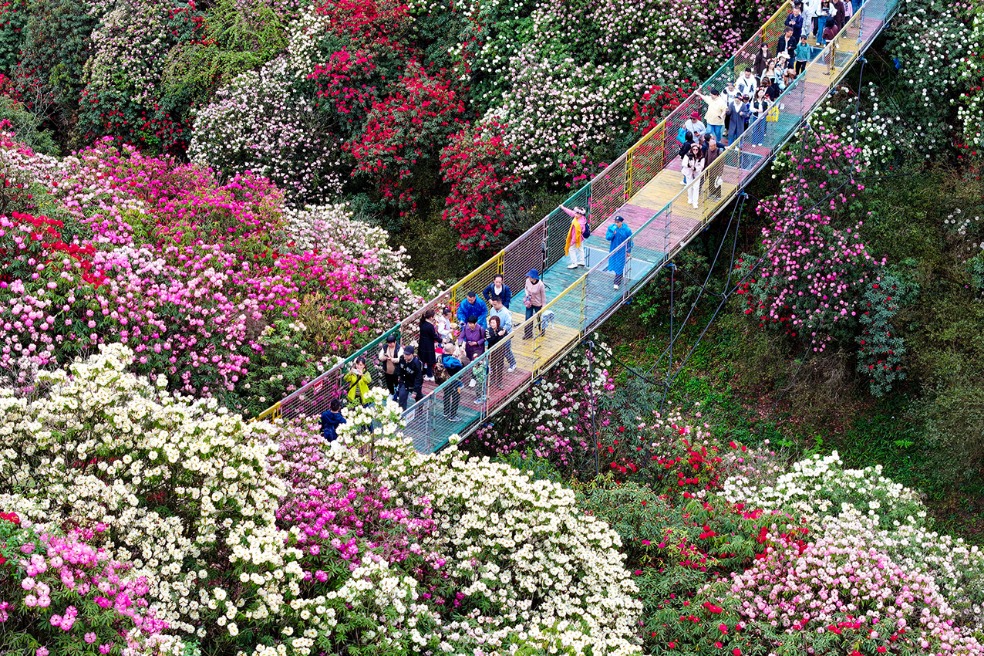Qilihai wetland natural reserve

Qilihai wetland natural reserve is a sample of ecological restoration and green development

Qilihai wetland natural reserve, an important part of the Natural Reserves of Tianjin Ancient Coasts and Wetlands, with wide water area, luxuriant vegetation and fresh air, is not only the habitant of various wildlife, but also plays an role in resisting drought and improving the ecological environment of Tianjin and its surrounding areas as well. Qilihai Wetland natural reserve is an important part of Tianjin's overall ecological frame. Ninghe District has spent 1 billion CNY in recent years to save the lost wetland and to revive the ecological situation in Qilihai, which was shrinking and suffering from severe ecological situation. In order to protect the wetland's ecology, the local government and residents have paid a lot but also gained a lot. Water conservation Chaobai River, which runs through Qilihai Wetland, is the wetland's water source and supplies the wetland's water all year round. However, this river's water was reducing for sedimentation. The river's water storage capacity increased from 5.8 million cubic meters to 35 million after widening and deepening project to the channel with huge investment. Currently, Chaobai River can run to the wetland smoothly. Reed protection Qilihai Wetland has reed fields of over 50,000 mu (3,333 hectares). The reed fields are managed and operated in a unified way in recent years, as well as unified dredging and transformation for the water system. The reeds' living environment was fundamentally improved as new water sources flood to reed fields. The reed output increases by double now. Birds protection There are about 182 species of birds at Qilihai Wetland, accounting for 78 percent of Tianjin’s bird species, including over 10 species under the national first-class protection. The local authorities built birds' protection area on the 5,000-mu (333-hectares) Xinghai Lake. Bird nestles and nestling structures as well as four 50mu's bird islands were constructed in the birds' protection area, and has attracted over 20 species of birds. Vegetation cultivation There are 153 species of wild plants of 41 families in Qilihai, accounting for 93 percent of the total plant species in Binhai area. A botanic garden was built to protect the wild plants, where over 130 native wild plants were fostered. It plans for large area planting in the wetland if succeeded. Eco-migration A population of 90,000 people used to live in the core area of Qilihai Wetland. In order to protect the wetland and recover its original condition, eco-migration was held and three new towns were built for these migrants. On the other way, it promotes the local tourism development. In accordance with Tianjin's regulation on such villages' construction, a tourism-oriented village was built in Qilihai for the protective development. Qilihai mode is properly utilization based on protection, trying to balance protection and utilization. Water, plants, birds and human reach a harmonious situation in Qilihai Wetland natural reserve, which provides a sample for ecological restoration and green development. Qilihai will continue the protection and recovery of wetland, with focus on the construction of a project involving the construction of forest belt, ditches, guard rails and ecological project surrounding the sea, as well as the reconstruction and treatment of 30,000-mu reed field, vegetation planting, bird island expansion and other projects for better protection of the wetland.

MOST POPULAR
- 1 Things to know about China Intl Consumer Products Expo 2024
- 2 China tops FDI confidence index of emerging markets
- 3 China specifies steps to improve payment services in tourist attractions
- 4 Low-altitude economy set to take off
- 5 China's immigration service platform receives over 10m calls from home, abroad
Editors' Picks
 Infographic:
2023 Sino-German investment and trade in numbers
Infographic:
2023 Sino-German investment and trade in numbers
 Infographic:
China-Germany relations in graphic
Infographic:
China-Germany relations in graphic
 Infographic:
Qingming Festival holiday in numbers
Infographic:
Qingming Festival holiday in numbers
 Infographic:
Development of Xiong'an New Area over past 7 years
Infographic:
Development of Xiong'an New Area over past 7 years



